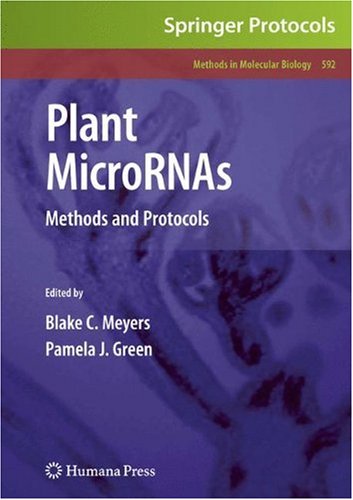

Most ebook files are in PDF format, so you can easily read them using various software such as Foxit Reader or directly on the Google Chrome browser.
Some ebook files are released by publishers in other formats such as .awz, .mobi, .epub, .fb2, etc. You may need to install specific software to read these formats on mobile/PC, such as Calibre.
Please read the tutorial at this link. https://ebooknice.com/page/post?id=faq
We offer FREE conversion to the popular formats you request; however, this may take some time. Therefore, right after payment, please email us, and we will try to provide the service as quickly as possible.
For some exceptional file formats or broken links (if any), please refrain from opening any disputes. Instead, email us first, and we will try to assist within a maximum of 6 hours.
EbookNice Team

Status:
Available4.6
18 reviewsMicroRNAs constitute a particularly important class of small RNAs given their abundance, broad phylogenetic conservation and strong regulatory effects, with plant miRNAs uniquely divulging their ancient evolutionary origins and their strong post-transcriptional regulatory effects. In Plant MicroRNAs: Methods and Protocols, experts in the field present chapters that focus on the identification, validation, and characterization of the miRNA class of RNAs, and address important aspects about heterochromatic small interfering RNAs. In addition, the methods contained in this volume emphasize miRNA analyses, but also include ways to distinguish one class of small RNAs from another. As a volume in the highly successful Methods in Molecular Biology™ series, chapters include brief introductions to their respective topics, lists of the necessary materials and reagents, step-by-step, readily reproducible laboratory protocols, and notes on troubleshooting and avoiding known pitfalls.
Authoritative and easy to use, Plant MicroRNAs: Methods and Protocols provides the research community with a set of protocols that will help advance vital miRNA research for all plant species, both in typical model species and non-model species alike.